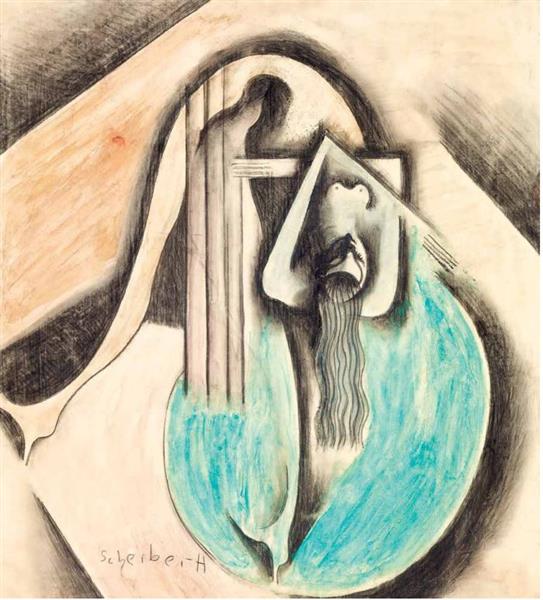Description
In the Canon of the Art of the twentieth century, the work "Táncosn? 1930" by Hugó Scheiber emerges as a vivid testimony of the modernity and cultural dynamics of his time. Scheiber, a Hungarian artist born in 1873 and died in 1950, stood out for his bold vision and his ability to capture the energy and movement of urban life. His work is part of the tradition of futurism and expressionism, two artistic currents that embrace dynamism and emotion.
"Tancosn? 1930" is a perfect example of this approach. The painting shows a dancer in a pose that suggests movement and grace, encapsulating the essence of entertainment of the time. The main figure dominates the canvas with a posture that suggests both sculpture and dance, evoking the vitality and frenzy of the Cabaré and the theater that were booming during the twenties and thirty years in Europe. The synergy between the human figure and the background full of vibrant colors creates a sensation of constant dynamism.
One of the most striking characteristics of this piece is the daring use of color. Scheiber uses a palette of strong and contrasting tones that infuse the work an almost palpable energy. The vibrant red color of the dancer's hair, combined with the tones of blue, yellow and black, not only serves to highlight the central figure but also to transmit an electric and avant -garde atmosphere. These colors are not mere decorative elements, but add a layer of emotion and vivacity to the portrait.
The composition shows clear influences of other futuristic and expressionists of the time. Scheiber achieves a balanced composition through geometric shapes and dynamic lines that guide the viewer's gaze through painting, creating a sense of movement that is essential to understand the work. Through these diagonal lines and curves, the paint comes alive, almost as if the dancer could slide out of the canvas at any time.
Scheiber is also known for his works that reflect the bustle of urban life and the speed of modernity, something that moves himself to "Táncosn? 1930". The figure of the dancer is not isolated in a vacuum, but seems to interact with an invisible context, suggesting a stage full of music, lights and spectators. This ability to suggest a broader environment from a single figure highlights the artist's skill.
Although the specific historical details about this particular work are not abound, "Táncosn? 1930" embodies the aesthetic and cultural values of a Europe in full transformation. Scheiber, with his unmistakable style and his ability to capture the essence of his time, offers us a look at the world of entertainment and urban culture of the time, all this while leaves an indelible brand in the history of modern art.
For all this, "Táncosn? 1930" is not just a painting; It is a cultural document, a vibrant choreography of color and form that celebrates modern life and the art of performance. It is a work that invites the viewer not only to see, but to feel the energy and emotion of an era that, although distant, continues to resonate today. Hugó Scheiber, through this piece, leaves us a legacy that lives not only in technique and form, but in the spirit of innovation and boldness that defines the great masters of art.
KUADROS ©, a famous paint on your wall.
Hand-made oil painting reproductions, with the quality of professional artists and the distinctive seal of KUADROS ©.
Art reproduction service with satisfaction guarantee. If you are not completely satisfied with the replica of your painting, we refund your money 100%.

